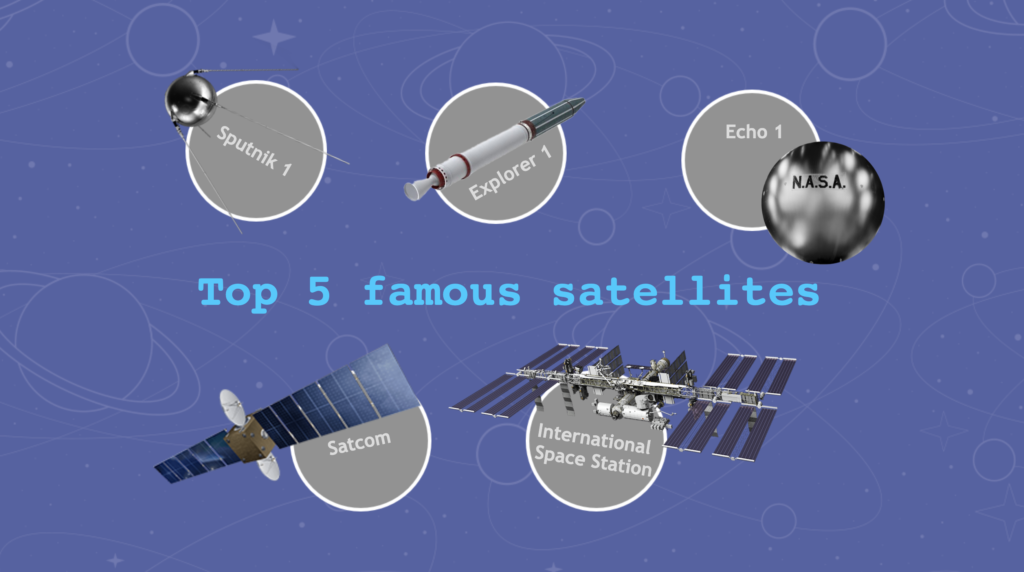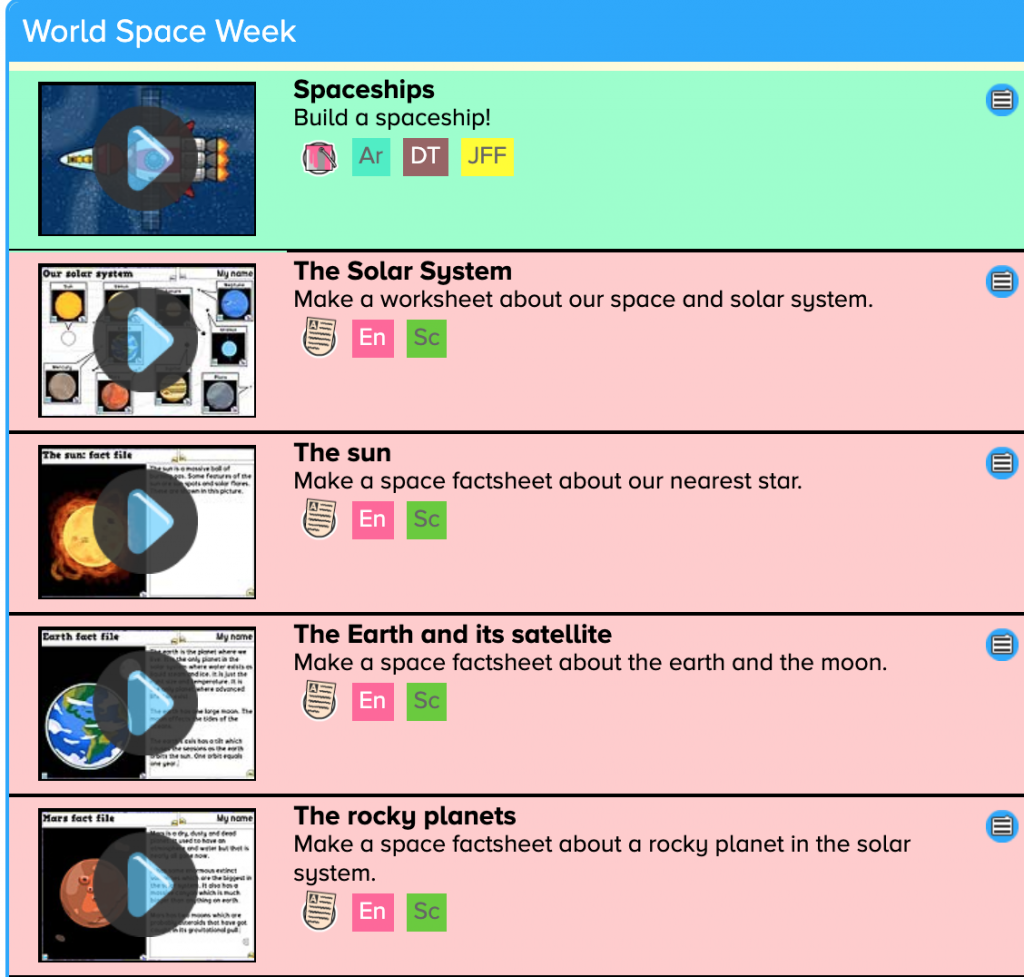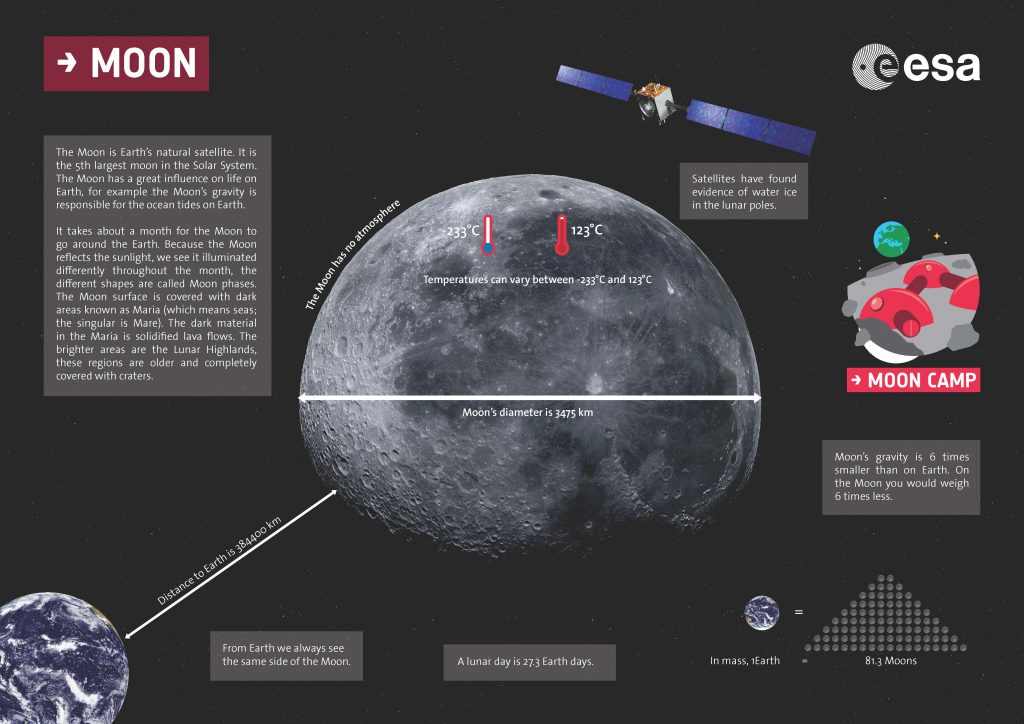The theme for the UN-declared World Space Week 2020 will be “Satellites Improve Life.”
There are a number of resources for educators to use during the week from the official World Space Week website.
If you haven’t used it yet, this week would be a perfect time to launch Space Adventures, this unique and engaging cross-curricular resource is based around an original story commissioned by LGfL by the award-winning author Cath Howe, entitled Space Adventures: Mission to the Moon.
It features dramatic video content and a virtual reality experience linked to a narrative. The aim is to draw the learner into the turn of events that threatens the ability of our intrepid astronaut Tazz to return safely back to earth. Will her on board computer be enough to get her back safely or will she need to draw on her maths and science knowledge and understanding? You can watch a trailer below:
The resource features a comprehensive set of resources for Maths, Literacy and Science and a Computing unit created by Max Wainwright, author of the popular espresso coding resource for primary schools.
The video below shows how one school used Space Adventures and the impact that it had across the curriculum.
J2e have a range of tools that can be used within Space week, the children could use any of the tools in j2write, to complete research into the planets, space and the Solar System as well as creating fact files on famous astronauts, below is a simple example of how a student could make a satellite fact file with hyperlinks (just click on the image to get access to the file)

J2code also has a range of resources and examples that can be used, first off the Turtle coding offers a simple but powerful platform on which you which a simple 'turtle based coding system to control a spite (Or more then one spite using advanced mode) you can change the background and have a limited amount of animated spites to create simple short based animations for KS1.
Secondly, you have Visual which is a block-based coding language in which you can freely code to create more complex coding outcomes for KS2, including, for example, creating a space-themed game:
Busy Things has a range of labelling and fact sheet templates covering the Solar System and Space that can be used in class for KS1 and KS2 for Space week, whilst younger children can get creative with designing their own spaceship. They have grouped activities in their special events section so that they can be easily pinned to a class room during Space Week.

You can find lesson plans and activities from Switched on Science – 'We Are Astronauts' in Year 3 and also The Out of this world Unit for Year 5 are both perfect to use during World Space Week.
If you are running an event in school, you can register this on the World Space Week website as well as finding a whole range of resources including A Space nutrition activity sheet and an activity leaflet from Tim Peake.
Solar System Scope is a free online model of the Solar System and the Night Sky in real-time with accurate positions of objects alongside a range of facts about the planets – great for research and showing in class, there is also a desktop version as well as both android and iOS apps.
Stem learning has a range of resources that can be used during Space Week, with just a few materials, building a paper model of the International Space Station (ISS) can become a class project. The resource contains a brief overview of the ISS, its parts, the science that occurs on board, instructions, and extension fact sheets. Learn about the ISS, explore fun facts, simulate building the station, and learn about the international partners.
Is there anyone out there? This resource was funded by the UK Space Agency and developed by ESERO-UK and CIEC Promoting Science. It is based upon the quest to discover more about the solar system through space projects such as the European Space Agency’s Aurora programme, and NASA’s Curiosity mission seeking to gather evidence of life on the planet Mars. The students take on the role of space scientists or space engineers to discover more about Mars. The activities in this resource are designed for students aged 9-12 years. The activities are organised into three themes: life, landscape and landing. Activities in the life and landscape themes are suitable for students aged 9 to 11. You can find all of the resources here, including getting your students to train like an astronaut in P.E.
Your class could even borrow the moon!

The STFC Lunar Rocks and Meteorites Loan Scheme has been running since the mid-1980s. It has lent the NASA Moon rock discs and meteorites to thousands of schools, museums and outreach organisers. You can find out how to apply here. The site also has a vast range of resources from the National Space centre suitable for ages 5-18.
There is a great range of teaching resources on Moon Camp, Moon Camp features preparatory classroom activities that focus on learning-by-design and science experimentation. Here teachers will find inspirational resources to develop curricular scientific experiments related to the Moon. Classroom resources can be combined to develop interdisciplinary projects. The infographic below would be great to use to introduce the topic of the moon to children.

VirtualiTeach – a non-profit site dedicated to all things AR and VR in Education have produced a great blog post entitled Space: The Virtual Frontier, it features a list of 20 experiences across four categories: AR apps, 360 videos on YouTube, mobile VR apps and full VR experiences from Steam.
Remember we would love to see your work for World Space week – you can share via our Twitter and Facebook page and don't forget the events hashtag #WSW2020





